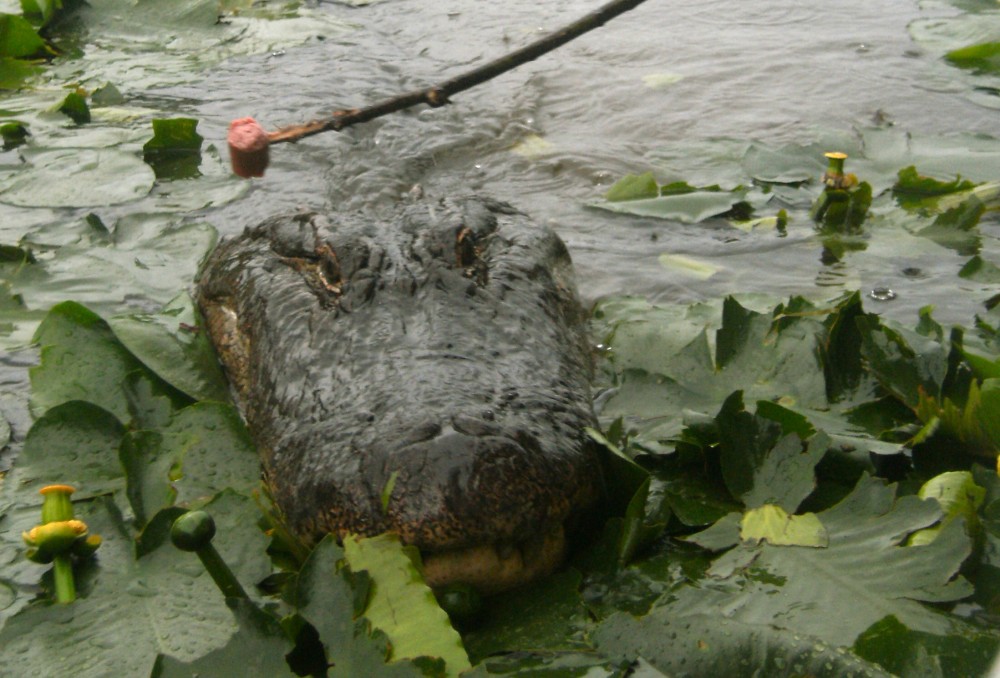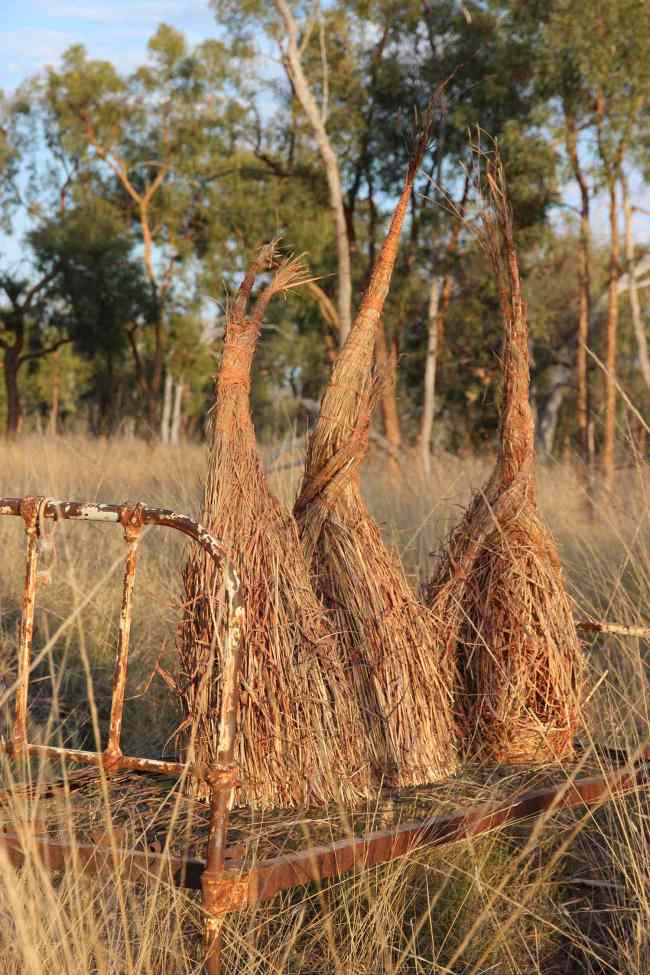Alison Clouston & Boyd, Coalface 2014
Luke Roberts, All Souls Day (Tree) 2009
Anyone living anywhere should see Bimblebox: art – science – nature or learn about it and view it online (or with the amazing iPad app available free)… Because even though it’s about the nature refuge called ‘Bimblebox’ in Central Queensland (that was to be protected forever and is now slated to be ruined by coal mining), it’s really about everywhere. This is most surely happening – or something a lot like it – near you, too.
The Hunter Bros aka Gerald Soworka , Bimblebox Art Project – What’s yours is my coal mine 2013 (details)
‘NIMBY’ – ‘Not In My Back Yard’ – what was once envisioned as an issue locally, in Williamsburg, Chaco Canyon, Bophal or Rio: now we know we share only one ‘back yard’ and it’s the Earth in all her beautiful, vulnerable entirety, all parts are the whole.

Approximate location of Bimblebox Nature Refuge
Bimblebox Nature Refuge is a peaceful 8000 hectare sanctuary in central west Queensland (hear the sounds of Bimblebox bird song at dawn here). Threatened by a massive new coal development proposed by Waratah Coal (owned by Clive Palmer, businessman and Member for Fairfax in the Federal Parliament), Bimblebox was created by private citizens and government and meant to be protected in perpetuity. Waratah Coal has announced that its ‘China First’ mine (otherwise known as the ‘Galilee Coal Project’) would involve open cut mining in more than half of Bimblebox and underground mining of the remainder.
This one mine (among others also slated for the Galilee Basin) would extract 40 mega-tonnes of coal per year, which would be transported on a yet-to-be-built 468km rail line up to Abbot Point and shipped through the Great Barrier Reef on its way to China, to be burned for energy production. The Queensland Government approved the proposal in August 2013, and the Federal Government in December 2013.
Bimblebox was secured in 2000, an era when Queensland’s land clearing rates were amongst the highest in the world. It was purchased with the savings of a number of concerned individuals, as well as funding from the Australian National Reserve System program. Tragically, Nature Refuges and the protected areas that make up the National Reserve System are not automatically protected from mineral exploration and mining, which in Australia are granted right of way over almost all other land uses. (1)
Jill Sampson, Out in the Paddock, Bimblebox Artist Camp 2013
Jill Sampson, Vanishing Food Bowls 2013
Fiona McDonald, Mining Alpha from the Mining Galilee Series 2013
 Donna Davis, REsearch (detail) 2013
Donna Davis, REsearch (detail) 2013
 Emma Lindsay, 15 endangered black-throated finches (Memento mori for Bimblebox) 2013
Emma Lindsay, 15 endangered black-throated finches (Memento mori for Bimblebox) 2013
 Alison Clouston and Boyd, Carbon Dating (detail), 2013
Alison Clouston and Boyd, Carbon Dating (detail), 2013
“The scorched-earth policies of a late and increasingly desperate capitalism,” is how the American art and social critic Lucy R. Lippard describes the current state of mining companies’ activities in the American Southwest. Her new book, Undermining: A Wild Ride In Words and Images through Land-Use, Politics and Art in the Changing West tells multiple stories similar to Bimblebox’s, and looks at art that has focused on the land, land use and related issues of the environment.
Lippard talks about undermining in all of the senses of the word – ” as in pits and shafts that reflect culture, alter irreplaceable ecosystems, and generate new structures; undermining’s physical consequences, its scars on the human body politic; undermining as what we are doing to our continent and to the planet when greed and inequity triumph; undermining as a political act- subversion is one way artists can resist.” (2)
Bimblebox: art – science – nature as an exhibition is not meant to be subversive in a manner we’ve come to expect. It will tour for two years throughout Australia, and venues will include towns and cities where mining is the biggest employer. The works in the show range from quietly oppositional to in-your-face don’t f*ck with me. And so viewers will be exposed to a whole range of responses from artists… but there is very little irony in the show, and no one would leave the exhibition unsure as to where the artists stand, much less lacking information as to how the Galilee Basin will be affected by the large scale mining proposed.
The pointed nature of the exhibition, whose works were almost all made during two artists’ residency camps at Bimblebox (the first time many of the artists had visited there), is supported by the excellent quality of the work. Curated by Beth Jackson of Artfully, the Redland Gallery space is beautifully choreographed throughout — not an easy task given the number of artists and their diverging styles.
Jill Sampson, Project Coordinator and contributing artist, is a tireless advocate for the Bimblebox Nature Reserve. Her vision for the exhibition grew out of her concern “that much of Australia is being claimed for mineral and gas extraction regardless of ecological value”. (3) Bringing artists to Bimblebox to be on the land, immersed in its particular kind of beauty, and to creatively respond while on site – results in an exhibition that brings Bimblebox to the viewer in a way that is unquestionably contemporary, timely and of the moment. If you walk in the gallery and look at the work, you are further implicated if you turn away from the issues. The show will act as an educational tool as well as a visiting point for school and social groups.
As Jackson states in her curatiorial essay, “Viewing is an active part of an ongoing process to learn from Bimblebox, not about it.”
Seventeen artists in total are included in Bimblebox: art – science – nature. Alison Clouston and her collaborator, Boyd, created Coalface at Bimblebox from walks in the bush “looking for life, spying with binoculars and a small movement sensor camera.” Donna Davis’ REsearch proposes “scientific research as a vehicle to discover new green technologies to replace resource mining…” so that native flora and fauna survive in situ rather than as specimens in science museum displays. Fiona McDonald uses found archival photographs as the basis for her digital drawings of mine maps. Her Mining Galilee series talks about “undercurrents in social processes of inclusion and exclusion… throwing into stark contrast the tragedy of the European presence compared with millennia of Aboriginal occupation of the same space.” (4)
Other artists include: Pamela CroftWarcon, Howard Butler, Kaylene Butler, Emma Lindsay, Liz Mahood, Samara McIlroy, Glenda Orr, Michael Pospischil, Jude Roberts, Luke Roberts, The Hunter Bro’s aka Gerald Soworka, and Shayna Wells.
For further information on how to download the digital catalogue go to: http://www.bimbleboxexhibition.com
For information about Redland Gallery and gallery location and hours go to: http://www.more2redlands.com.au/ArtGallery/CurrentExhibitions/Pages/default.aspx
You can also follow the Bimblebox Art Project at the blogsite:
http://bimbleboxartproject.wordpress.com/category/bimblebox-art-project/
Bimblebox: art – science – nature App for iPad
Anyone interested in the future of digital publishing might want to check out this Digital Art Exhibition Catalogue with its content rich environment and embedded interactivity. Artworks in a real world gallery are one thing but this app provides a virtual experience of a remote place – the Bimblebox Nature Refuge in central western Queensland; 17 artists interpretation of that place, including photography and video footage of artist interviews, artist camps, studios and artmaking processes; and information on the social, scientific and environmental context of the Galilee Basin where proposed massive-scale coal mining threatens to destroy this precious place. Search for Bimblebox on the app store and download to iPad for free. Published by Tangible Media.
Notes:
(1)
, accessed 04/06/2014
(2) Lucy Lippard, Undermining: A Wild Ride In Words and Images through Land-Use, Politics and Art in the Changing West (The New Press, New York, 2013)
(3) and (4) Bimblebox: art – science – nature exhibition catalogue
Artwork Captions and Photo Credits:
Alison Clouston and Boyd
Coalface 2014
Soundtrack, video, electronics, aluminium, coal, rubber, greenhouse gas audit and offset
1050 x 1710 x 900 mm
Photo: Stephen Oxenbury
Alison Clouston and Boyd
Carbon Dating 2013 (detail)
Soundtrack, electronics, aluminium, rubber, coal, carboniferous mudstone, greenhouse gas audit and offset
1800 x 6000 x 300mm
Photo: Alison Clouston
Donna Davis, REsearch, 2013, (detail), Mixed media installation: pigment print, timber, sand & animal tracks, 1800 x 1200 x 300mm, Photo: courtesy of the artist
Jill Sampson, Out in the Paddock 2013, work in progress during artists’ camp. Photo: courtesy the artist
Jill Sampson, Vanishing Food Bowls, 2013, (detail), Mixed media installation: wire, silk, thread, paper, wool, wood, plastic, steel, 600 x 1530 x 1060mm, Photo: Carl Warner
Fiona MacDonald, Mining Alpha from the Mining Galilee series, 2013, Inkjet print on 180gsm archival paper, 720 x 560mm
Artwork source and reference images: Mercer Studio portraits courtesy the Central Queensland Collection, Rockhampton Regional Council Libraries; The Alpha Mine Test Pit, Galilee Basin, Queensland – cqnews.com.au
Photo: courtesy of the artist
Emma Lindsay, 15 endangered black-throated finches (Memento mori for Bimblebox), 2013, Oil on linen, 310 x 910mm, Photo: Elouise
The Hunter Bros aka Gerald Soworka , Bimblebox Art Project – What’s yours is my coal mine. 2013 (details)
Pair of artist’s books in hinged slipcase – mixed media drawing
Book 1 – 38 cm x 700 cm; Book 2 – 38 cm x 1624 cm. Image courtesy of the artist
Luke Roberts, All Souls Day (Tree), 2009 Photographic performance from the series All Souls Day, Pigment ink on cotton rag paper, 1800 mm H x 1200 mm W unframed Camera: John Elliott – Image courtesy of the artist and Milani Gallery, Brisbane






